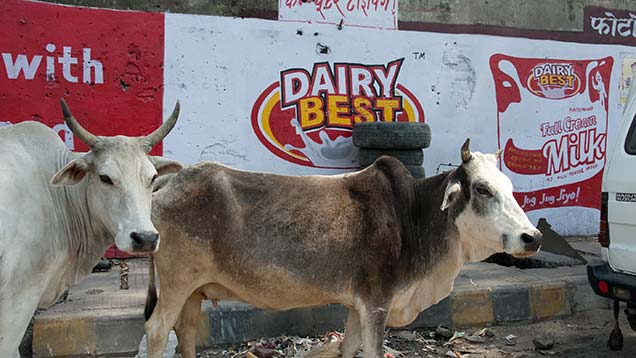11 amazing facts about dairy farming in India
 © Adrian Page/REX
© Adrian Page/REX Dairy farming in India is a world away from what British farmers would recognise.
See also: Dairy Crest suppliers launch first dairy producer organisation
RS Sodhi, managing director of the Gujarat Co-operative Milk Marketing Federation (GCMMF), stunned the Dairy Industry Newsletter Conference on Wednesday (20 May) with these incredible facts and figures:
1. India is the world’s biggest producer and consumer of dairy. Milk production totals 140bn litres a year (UK farmers delivered 14.4bn litres in 2014-15) and the country is self-sufficient in dairy, with demand growing 4.5% year on year.
2. Of that 140bn litres, about 50bn litres are kept by the farmers for their own consumption.
3. Price volatility is yet to arrive. The dairy sector is protected from foreign imports and prices paid to GCMMF’s farmers are rising about 9% a year.
4. The GCMMF is made up of 3.6 million farmer members, structured through a network of village co-operatives and district groups.
5. Milk production costs are almost competitive with the likes of Australia and New Zealand, and lower than in the EU. Indian dairy is very low-input and -output.
6. India has 300 million bovines. One-third are buffalo, which provide 55% of the milk.
7. But in a country of 1.4 billion people, the average herd size is between one and two cows.
8. The average net income for a dairy farmer is US$387 (£247) a cow each year. That is not much when you’ve only got one or two animals.
9. Dairy farming is mainly a woman’s game. They look after the livestock while men typically find a wage beyond the home.
10. Indian farmers receive 80-86% of every rupee spent on milk by consumers. This is due to supply chain efficiency and very few big retailers. British farmers’ share of the on-shelf price is about 36%.
11. The most popular way to buy milk is in plastic pouches. Under the Amul brand, the GCMMF sells 20m every day. Ghee, a kind of clarified butter, is their next top product.

